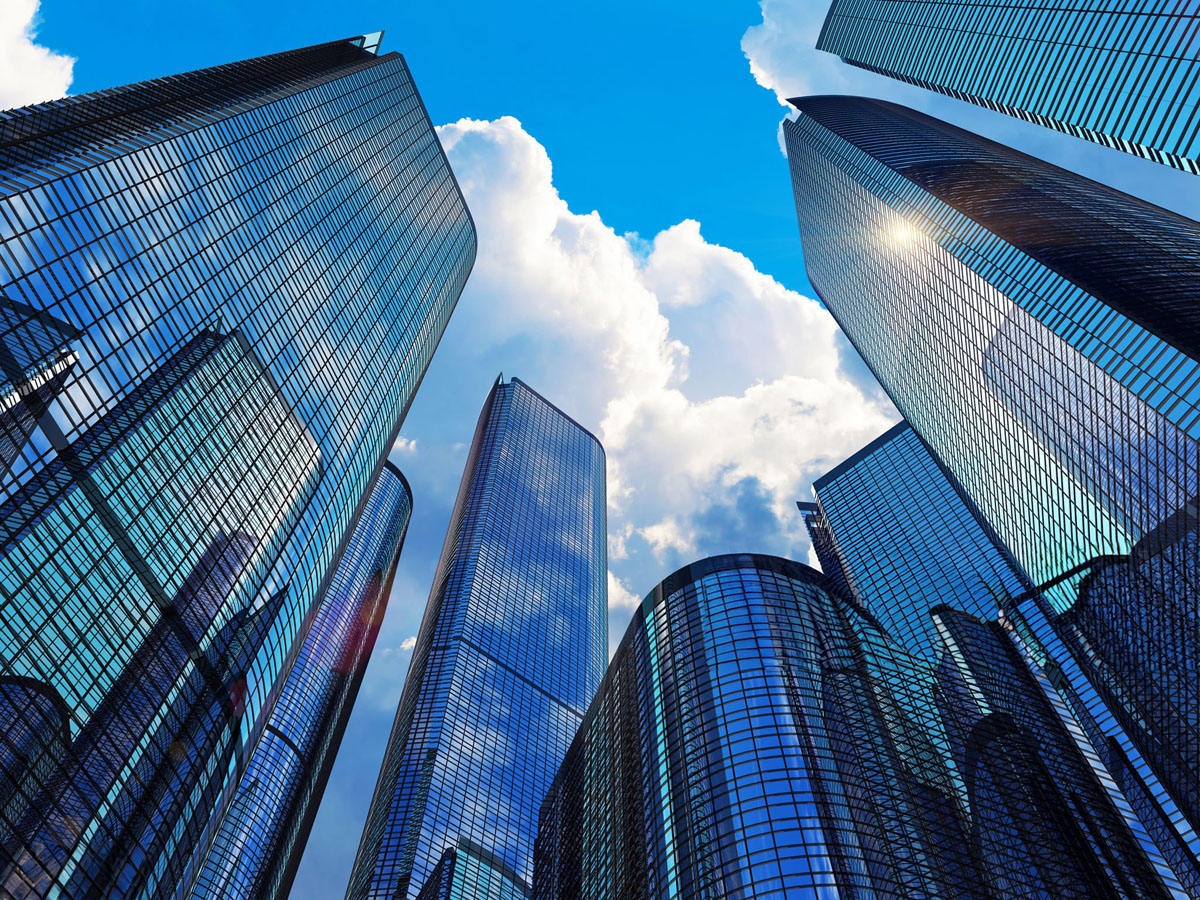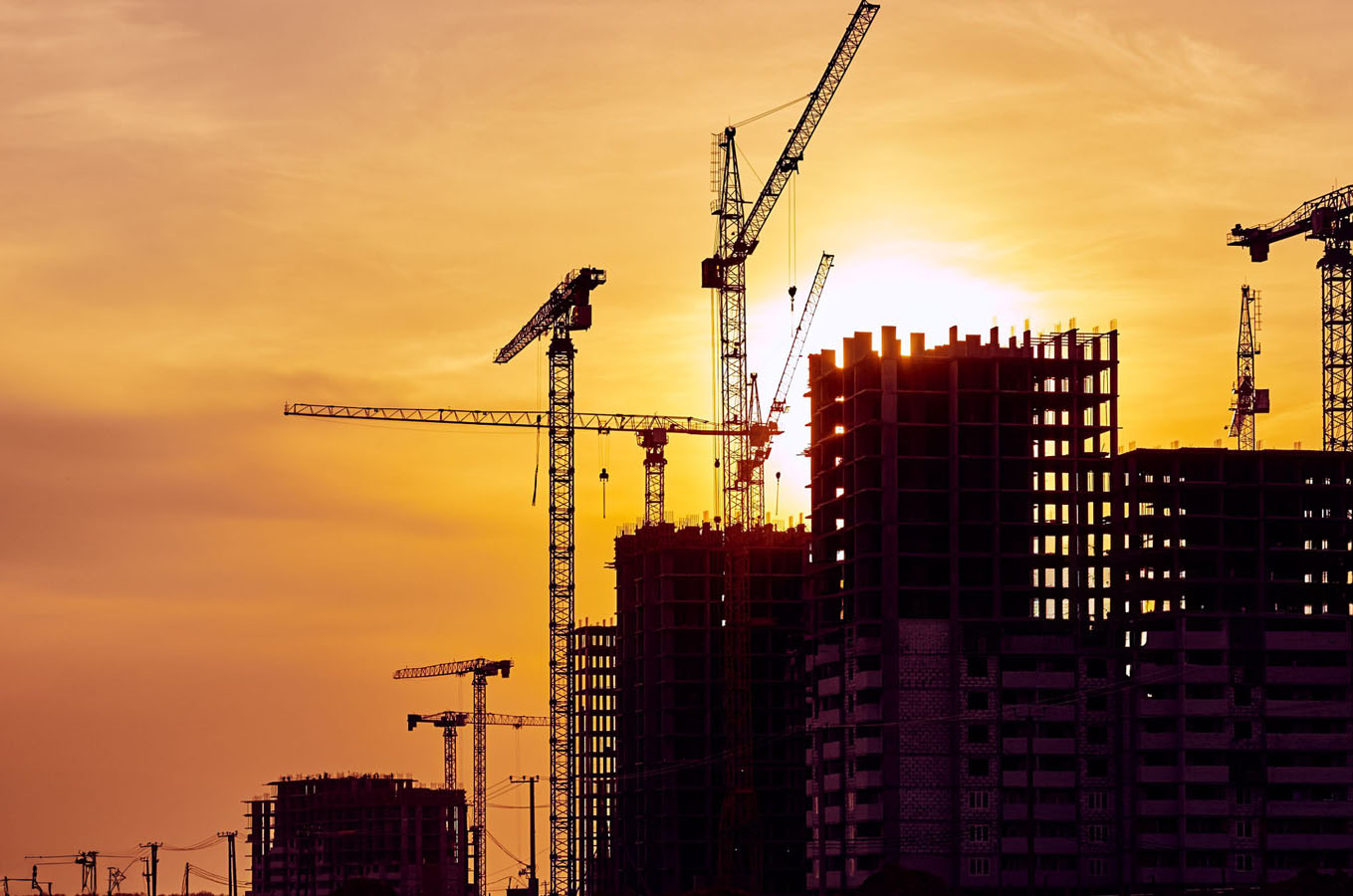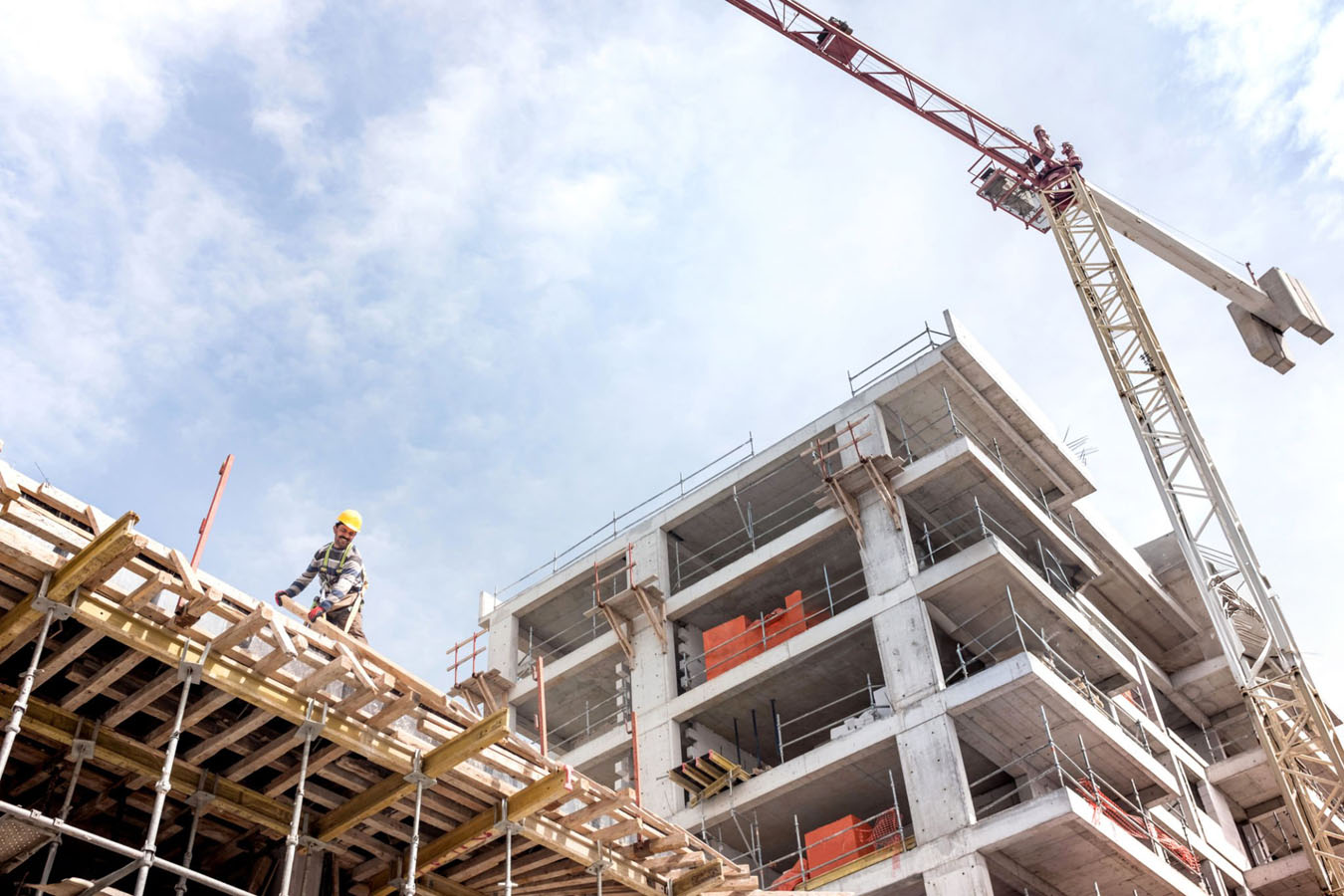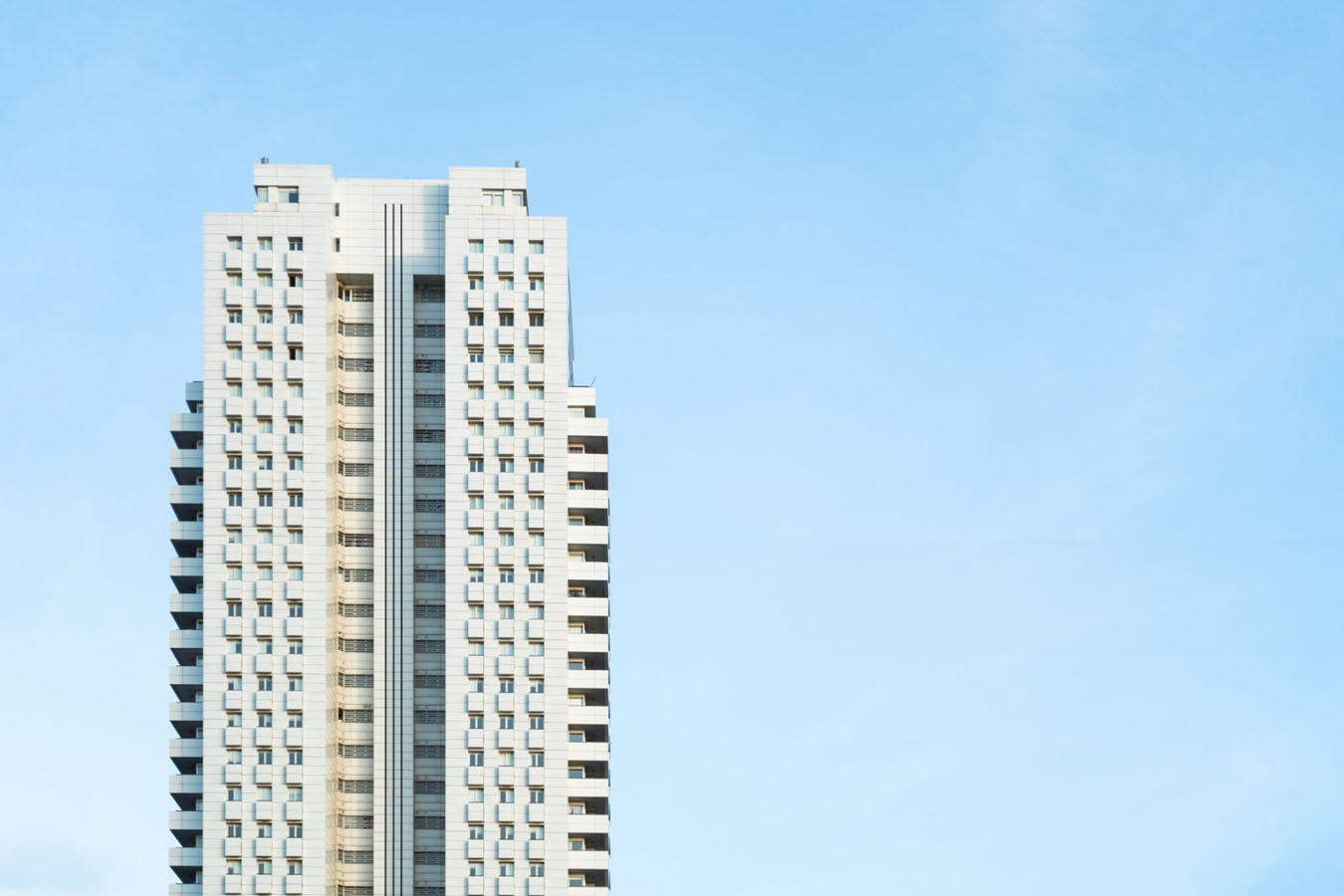Urbanization describes the population shift from rural areas to urban centers. As populations grow, the demand for space increases, resulting in the need for vertical architecture solutions like high-rise buildings. These structures are designed to maximize space and provide housing, commercial spaces, and offices within the same footprint, addressing the issue of limited land in rapidly growing cities.
1. Introduction to Urbanization and High-Rise Buildings
Urbanization is one of the most significant trends in the 21st century. The global urban population has been steadily increasing and is projected to account for nearly 68% of the world's population by 2050. Urban areas occupy only a small portion of the Earth's surface but consume a disproportionate share of energy and produce the majority of greenhouse gas emissions. Proper urban planning is essential for ensuring the sustainability and livability of these densely populated areas. High-rise buildings are a critical component of modern urbanization. They allow cities to accommodate more people and businesses in smaller areas, reducing the need for expansive urban sprawl. High-rise buildings are generally defined as structures that exceed the average height of surrounding buildings, and they require advanced architectural designs to ensure both functionality and aesthetics.
1.1. Defining Urbanization
Urbanization is the process by which rural populations migrate to urban areas, transforming cities into hubs of economic and social activity. This migration is often driven by the promise of better job opportunities, education, healthcare, and overall living standards. Urbanization is typically associated with industrialization, as industries are concentrated in cities, attracting workers from rural areas.
Urbanization is measured by the proportion of a country’s population that lives in urban areas. Countries with high levels of urbanization tend to have service-based economies and advanced infrastructure. However, urbanization also brings challenges, including overcrowding, pollution, and the strain on resources such as water, electricity, and transportation systems.
There are different types of urbanization:
- Suburbanization: Movement from the city center to suburban areas.
- Counterurbanization: Movement from cities back to rural areas.
- Reurbanization: Revitalization of urban areas, often in previously neglected inner-city neighborhoods.
- Exurbanization: Movement from cities to more distant rural areas.
- Hyper-urbanization: Extremely rapid urban population growth, which can outpace infrastructure development.
1.2. History and Evolution of High-Rise Buildings
The concept of high-rise buildings has evolved significantly since the late 19th century. Early high-rise buildings, commonly known as skyscrapers, were first built in cities like Chicago and New York. Technological advancements, such as the invention of elevators and steel-framed structures, made it possible to construct taller buildings. Over time, high-rise buildings became symbols of economic prosperity and urban growth. In the mid-20th century, cities like Hong Kong, Singapore, and Tokyo began constructing high-rise buildings as a solution to land scarcity and population growth. Today, high-rise buildings are found in cities around the world, contributing to the vertical expansion of urban areas.
2. Socio-Economic Impacts of Urbanization
Urbanization has a profound impact on the socio-economic fabric of cities. While it creates opportunities for economic growth and development, it also brings challenges, such as increased inequality, housing shortages, and changes in the social dynamics of urban populations.
2.1. Population Density and Urban Growth
Urbanization often leads to higher population density in cities. As more people move to urban areas, the need for housing, transportation, and other services grows. High-rise buildings are a practical solution to this problem, allowing cities to house more people in a smaller area. This vertical development helps prevent urban sprawl, which can consume valuable land and resources. Mega-cities, defined as urban areas with more than 10 million inhabitants, are becoming more common, particularly in Asia. Cities like Mumbai, Dhaka, and Karachi are expected to experience significant population growth in the coming decades. However, unplanned urbanization in developing countries can lead to slums and poor living conditions, making it crucial for city planners to implement sustainable strategies.
2.2. Income Disparities in Urban Areas
Urbanization can widen the gap between rich and poor populations. In many cities, affluent residents live in high-rise apartments and enjoy access to modern amenities, while low-income populations struggle with inadequate housing and limited access to services. This disparity often leads to social tensions and can exacerbate issues such as crime and homelessness. Efforts to address income disparities in urban areas often focus on affordable housing and the development of mixed-income communities. By ensuring that all residents have access to decent living conditions, cities can promote social cohesion and reduce inequality.

3. Environmental Considerations in High-Rise Building Design
High-rise buildings are often criticized for their environmental impact, particularly in terms of energy consumption and carbon emissions. However, with the right design strategies, these buildings can contribute to urban sustainability. Incorporating green technologies and energy-efficient materials can reduce the environmental footprint of high-rise buildings and improve the quality of life for their occupants.
3.1. Energy Efficiency and Sustainable Design
Energy efficiency is a key consideration in the design of high-rise buildings. These structures consume significant amounts of energy for heating, cooling, lighting, and other essential functions. By incorporating energy-efficient technologies, such as double-glazed windows, solar panels, and energy-efficient HVAC systems, high-rise buildings can reduce their energy consumption and minimize their impact on the environment. Green roofs and rooftop gardens are also effective ways to improve energy efficiency. These features help insulate buildings, reducing the need for heating and cooling, while also providing green spaces that enhance biodiversity and contribute to air quality.
3.2. Green Spaces and Biodiversity Conservation
High-rise buildings can be designed to include green spaces that support biodiversity and improve urban environments. Parks, rooftop gardens, and vertical green walls can help mitigate the heat island effect, improve air quality, and provide habitats for birds, insects, and other wildlife. Incorporating green spaces into high-rise designs not only benefits the environment but also enhances the well-being of residents. Access to nature has been shown to reduce stress, improve mental health, and promote physical activity, making green spaces an essential component of urban planning.
4. Architectural and Structural Design Challenges
Designing high-rise buildings presents unique architectural and structural challenges. These structures must be able to withstand natural forces such as wind, earthquakes, and temperature fluctuations, while also maximizing usable space and providing a comfortable living environment for residents.
4.1. Maximizing Usable Space in High-Rise Buildings
Maximizing usable space in high-rise buildings is essential, especially in densely populated urban areas. Architects use innovative design strategies, such as tiered structures and open floor plans, to create flexible and functional spaces. Public amenities, such as lobbies, gyms, and rooftop gardens, are often incorporated into high-rise designs to enhance the livability of the building.
By optimizing the internal layout and using creative designs, architects can make the most of limited space while still providing a high quality of life for residents. For example, tiered buildings allow for more natural light to reach lower levels, creating a more pleasant environment for occupants.
4.2. Incorporating Safety Features and Emergency Protocols
Safety is a critical consideration in high-rise building design. These structures must be equipped with fire-resistant materials, advanced sprinkler systems, and clear evacuation routes to ensure the safety of residents in case of emergencies. Stairs, fire escapes, and other emergency features must be strategically placed to allow for quick and safe evacuations.
Modern high-rise buildings also incorporate advanced safety technologies, such as smoke detectors and automatic fire suppression systems. In addition, building management systems can monitor safety features and alert occupants and emergency personnel in the event of an incident.
5. Technological Innovations in High-Rise Construction
As urban populations continue to grow, technological advancements are playing an increasingly important role in the design and construction of high-rise buildings. Innovations in materials, construction techniques, and building management systems are allowing architects and engineers to push the boundaries of what is possible in vertical architecture.
5.1. Advancements in Materials and Construction Techniques
Recent advances in construction materials, such as carbon fiber, 3D-printed concrete, and high-performance glass, have revolutionized high-rise building construction. These materials are stronger, lighter, and more energy-efficient than traditional materials, making it possible to build taller, more resilient structures. One significant innovation is the use of Building Information Modeling (BIM), which allows architects and engineers to create detailed digital models of buildings before construction begins. BIM helps identify potential problems, optimize designs, and streamline the construction process, reducing costs and improving efficiency. Other innovations, such as prefabricated modules and robotic construction techniques, are also transforming the industry. These methods allow for faster construction times and more precise assembly, helping to reduce waste and improve the overall quality of high-rise buildings.
5.2. Smart Building Technologies
Smart building technologies are becoming increasingly common in high-rise construction, allowing for greater control over energy use, security, and building operations. These systems use sensors, data analytics, and automation to monitor and optimize building performance, reducing energy consumption and improving occupant comfort.
For example, smart HVAC systems can adjust temperature and ventilation based on real-time data, while smart lighting systems can dim or brighten lights depending on the time of day and occupancy levels. Additionally, advanced security systems can monitor access points, detect intruders, and respond to emergencies in real-time.
By integrating smart technologies into high-rise buildings, developers can create more efficient, sustainable, and user-friendly environments that meet the needs of modern urban dwellers.

6. Case Studies of Iconic High-Rise Buildings
High-rise buildings are not only functional structures but also iconic symbols of urban innovation and architectural achievement. Two of the most famous examples of high-rise buildings are the Burj Khalifa in Dubai and the Shanghai Tower in China.
6.1. Burj Khalifa, Dubai
The Burj Khalifa is the tallest building in the world, standing at 828 meters (2,717 feet). Completed in 2010, the Burj Khalifa is a marvel of modern engineering and architecture. Its design was inspired by the Hymenocallis flower, and it features a unique Y-shaped floor plan that maximizes space and allows for greater stability.
The building’s construction involved the use of advanced materials and techniques, including high-strength concrete and a buttressed core structure that helps support the immense weight of the building. The Burj Khalifa also incorporates numerous sustainability features, such as a condensate collection system that captures water from the building’s air conditioning system and recycles it for use in irrigation and landscaping. The Burj Khalifa is not only an architectural masterpiece but also a symbol of Dubai’s ambition and economic growth. Its presence has transformed the city’s skyline and attracted millions of tourists from around the world.
6.2. Shanghai Tower, China
The Shanghai Tower is the second-tallest building in the world, standing at 632 meters (2,073 feet). Completed in 2015, the tower is a prime example of innovative design and sustainable construction. Its unique twisting shape reduces wind loads and improves stability, while its double-skin façade helps regulate temperature and reduce energy consumption. The tower is designed as a vertical city, with offices, hotels, retail spaces, and public areas spread across its 128 floors. It also features the world’s fastest elevators, which travel at speeds of up to 20.5 meters per second (45.9 miles per hour), allowing visitors to reach the observation deck in just 55 seconds. One of the tower’s most impressive features is its commitment to sustainability. It incorporates numerous green technologies, including rainwater harvesting systems, wind turbines, and geothermal energy. These features help reduce the building’s environmental footprint and make it a model for future high-rise developments.
7. Urban Planning Strategies for High-Rise Developments
As cities grow and high-rise buildings become more common, urban planners must develop strategies to ensure that these structures are integrated into the city’s infrastructure and contribute to the overall quality of life for residents. Proper planning is essential for managing population density, reducing congestion, and creating livable urban environments.
7.1. Mixed-Use Zoning and Vertical Communities
One of the most effective strategies for high-rise development is mixed-use zoning, which allows for the integration of residential, commercial, and recreational spaces within the same building or neighborhood. This approach creates vibrant, self-sustaining communities where people can live, work, and play without relying on cars or long commutes.
Mixed-use developments often include public spaces, such as parks, plazas, and community centers, that encourage social interaction and create a sense of community. By incorporating green spaces, pedestrian-friendly streets, and accessible public transportation, these developments can help reduce traffic congestion and improve the overall quality of life in urban areas.
Vertical communities, where residents live in high-rise buildings with access to shared amenities and public spaces, are becoming increasingly popular in cities around the world. These developments offer a sustainable solution to urban growth by maximizing land use and minimizing environmental impact.
7.2. Transportation Infrastructure and Accessibility
High-rise developments require well-planned transportation infrastructure to ensure that residents and workers can move efficiently throughout the city. Public transportation systems, such as subways, buses, and light rail, are essential for reducing traffic congestion and providing easy access to high-rise buildings.
In cities like Singapore and Hong Kong, high-rise developments are often located near transportation hubs, making it easy for residents to commute without relying on cars. These cities also use innovative planning strategies, such as underground pedestrian walkways and elevated walkways, to connect high-rise buildings with public transportation and reduce congestion at street level.
By prioritizing transportation infrastructure and accessibility, urban planners can create high-rise developments that are both functional and sustainable, meeting the needs of a growing population without compromising quality of life.

8. Cultural and Social Dynamics in High-Rise Living
High-rise living presents unique challenges and opportunities for fostering community engagement and preserving cultural identity. As more people move into vertical neighborhoods, it becomes increasingly important to consider the social dynamics of these environments and create spaces that promote social cohesion and inclusivity.
8.1. Community Engagement and Social Cohesion
Community engagement is essential for creating a sense of belonging and social cohesion in high-rise neighborhoods. By incorporating public spaces, such as community centers, gardens, and recreational areas, developers can encourage social interaction and create opportunities for residents to connect with one another.
In some high-rise developments, shared amenities such as gyms, co-working spaces, and rooftop terraces serve as gathering places where residents can meet and build relationships. These spaces help foster a sense of community and improve the overall livability of the building.
Efforts to promote social cohesion in high-rise developments should also include organizing community events and establishing resident associations. These initiatives can help residents feel more connected to their neighbors and create a supportive, inclusive environment.
8.2. Cultural Integration and Identity Preservation
High-rise developments are often located in culturally diverse urban areas, making it important to consider the cultural integration of residents. Developers should work with local communities to ensure that new high-rise buildings respect and preserve the cultural identity of the neighborhood. For example, in culturally diverse cities like Copenhagen and Sydney, high-rise developments are designed to reflect the unique cultural heritage of the area. By incorporating elements of local architecture and public art, developers can create buildings that celebrate the cultural diversity of the neighborhood and contribute to its social fabric.
Preserving cultural identity in high-rise developments is not only important for fostering inclusivity but also for creating a sense of place and belonging for residents. By respecting the cultural values of the community, developers can ensure that high-rise buildings contribute to the overall vibrancy and character of the city.
9. The Future of High-Rise Buildings and Urbanization
As urban populations continue to grow, the need for innovative high-rise buildings will become increasingly important. Future high-rise developments will need to address key challenges, such as climate change, food security, and resilience, while also creating sustainable, livable environments for residents.
9.1. Vertical Farming and Food Security
One potential solution to urban food security is the integration of vertical farms into high-rise buildings. These farms use hydroponic or aeroponic systems to grow crops in controlled environments, reducing the need for arable land and minimizing the environmental impact of food production. Vertical farms can be incorporated into new high-rise developments, providing fresh, locally grown produce to residents and reducing the carbon footprint associated with transporting food from rural areas to cities. This approach not only addresses food security but also contributes to the sustainability of urban environments.
9.2. Resilient Design for Climate Change Adaptation
As cities face increasing threats from climate change, such as rising sea levels and extreme weather events, resilient design will play a crucial role in the future of high-rise buildings. Architects and engineers are developing new strategies to create buildings that can withstand these challenges while minimizing their environmental impact.
Resilient design includes features such as flood-resistant foundations, energy-efficient systems, and green roofs that help mitigate the effects of climate change. By incorporating these strategies into high-rise developments, cities can create buildings that are better equipped to handle future environmental challenges and ensure the safety and well-being of their residents.
10. Conclusion
High-rise buildings are an essential component of modern urbanization, providing a solution to the challenges posed by rapid population growth and limited land availability. By incorporating innovative architectural designs, green technologies, and sustainable planning strategies, high-rise buildings can contribute to the creation of livable, resilient, and environmentally friendly cities. As cities continue to grow and evolve, high-rise developments will play a key role in shaping the future of urban living. Through thoughtful design and planning, these structures can enhance the quality of life for residents, promote social cohesion, and address critical challenges such as climate change and food security.

